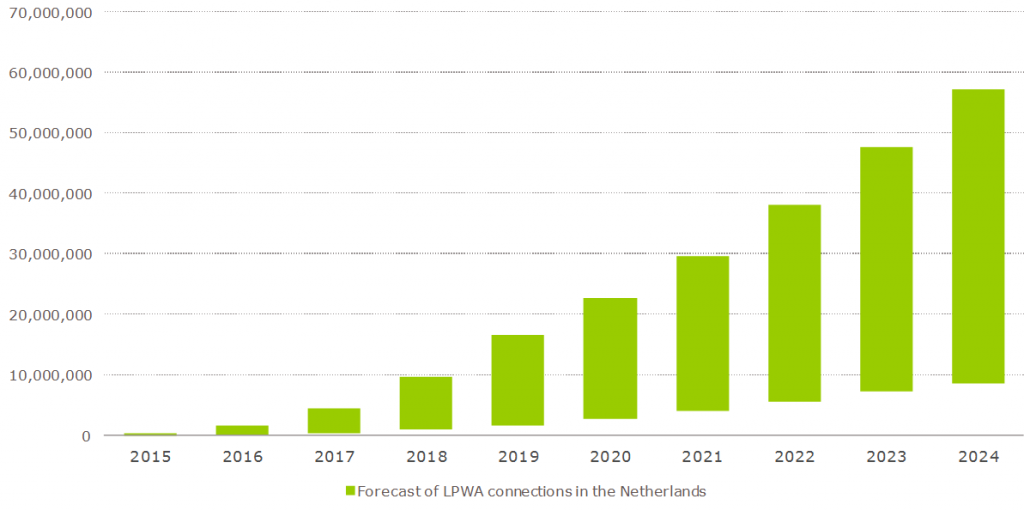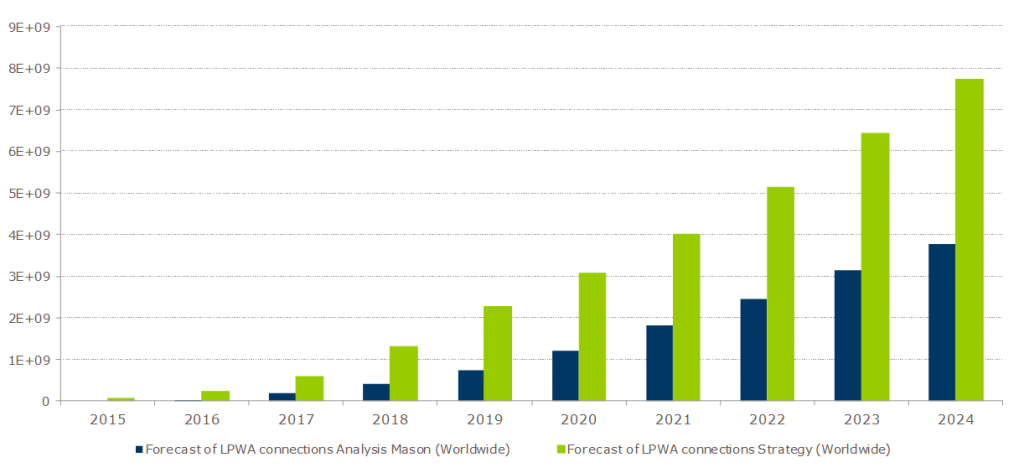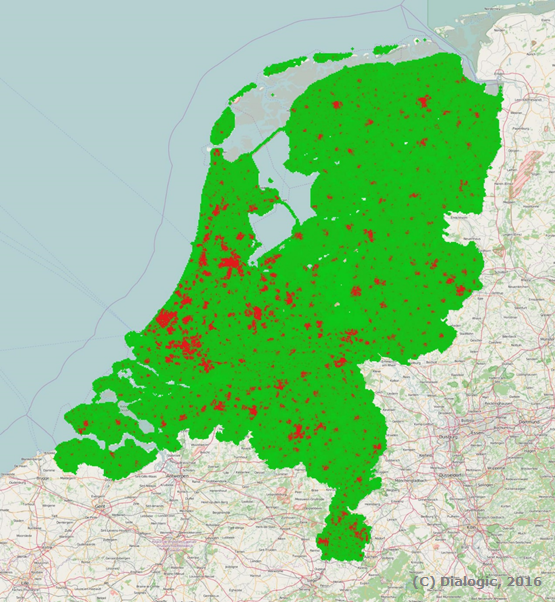
Will long-range wireless IoT in unlicensed bands cause issues?
4-10-2016

Long-range, large scale deployments of IoT networks have high impact on the wireless spectrum. The main technologies for LPWA (low-power, wide area) IoT in licensed spectrum are LTE-M1 (LTE Cat MTC), LTE-M2 (NB-IoT) and (future) 5G IoT. In unlicensed spectrum, LoRaWAN (based on spread spectrum) and SIGFOX (ultra narrowband) are the most prominent technologies for LPWA IoT that are currently being deployed in the Netherlands.
In a study commissioned by the Dutch Radiocommunications Agency, which I led, Dialogic and Inwilution analyzed the current and future impact of wireless Internet of Things (IoT) connectivity on the radio spectrum. The main research questions are:
- Which issues will be caused by the utilisation of spectrum below 1 GHz by wireless IoT applications, and what are possible solutions for overcoming these issues?
- What are obstacles concerning the oversight and regulatory enforcement of wireless IoT applications, how can these be overcome, and how can monitoring contribute?
Findings
We expect very fierce competition between the licensed and unlicensed technology families, where the main contention points will be (1) price of device, (2) time to market and (European, countrywide) network coverage, and (3) reliability and security. We do not expect the market to standardize on either solution. We also expect different technologies for LPWA IoT to co-exist in unlicensed bands for the near future.
Based on our analysis we expect that there will be between 8.6 and 52.1 million LPWA devices in the Netherlands in 2024. Most of the devices are expected to be in the categories agriculture and environment and smart buildings. Monitoring the trade flows of these devices will not be an easy task due to the diverse supply chains of LPWA IoT devices.



Deployment of LPWA IoT networks in licensed spectrum is expected to be gradual and smooth. Neither LTE-M1 nor LTE-M2 appear to be bound by concurrent usage issues, as these standards provide very good means for power control and concurrent access. The situation regarding IoT networks in unlicensed spectrum below 1 GHz is much more complex. The 863-870 MHz band, in particular the frequencies around 868 MHz, appear to be very popular for all technologies currently deployed at scale.
The impact of short range IoT usage in unlicensed spectrum is expected to be limited: a very high level of frequency re-use is possible for short rang applications. The regulatory framework may however not be adequate in the light of large-scale deployments of long-range technologies, such as for LPWA IoT. Two new scenarios of interference are of particular interest:
- The scenario where short range devices are close to a base station of a long range network, and cause interference that harms long range communication in the whole long range cell.
- A scenario where there is interference between different long range technologies in the same spectrum.
At the wider scale, monitoring is an instrument that provides information on the overall health of the spectrum with respect to its intended usage. At the more local level, monitoring can be used as a tool to troubleshoot local problems, or (by sampling various locations) to obtain a more detailed view on the spectrum health.
Conclusions
Which issues will be caused by the utilisation of spectrum below 1 GHz by wireless IoT applications, and what are possible solutions for overcoming these issues?
- We expect that the currently available spectrum is sufficient to handle the expected connectivity demand for wireless IoT.
- The use of unlicensed spectrum for mission-critical communications presents a risk with respect to televulnerability.
- Many short-range IoT applications do not necessarily need to use spectrum below 1 GHz.
- LPWA IoT networks in the unlicensed bands are limited in efficiency due to the fact that current duty cycle regulations limit the downlink capacity and hence the network to perform e.g. power control.
- The usage of different kinds of technology for LPWA IoT in unlicensed spectrum leads to additional interference and suboptimal usage of the spectrum.
What are obstacles concerning monitoring and enforcement of wireless IoT applications, how can these be overcome, and how can monitoring contribute in solving this issues?
- Problems resulting from interference with and between LPWA IoT transmissions will be primarily local and intermittent.
- Monitoring trade flows of devices containing LPWA IoT technology is difficult due to the diversity of supply chai.
- We expect interference from devices that are imported from countries outside of Europe, especially in the 902-928 MHz band.
- Traditional monitoring instruments can, to a limited extent, be reconfigured for monitoring wireless IoT spectrum usage. We suggest augmenting traditional monitoring with monitoring based on IoT network operator data, SDR nodes, and specialised IoT monitoring nodes.
Recommendations
- We recommend the Dutch Radiocommunications Agency to instruct operators and user groups to educate (potential) users of IoT LPWA connectivity in unlicensed spectrum about the possible (future) risks regarding availability and reliability.
- Operators of LPWA IoT networks in unlicensed spectrum should be encouraged to further densify their network.
- We recommend the Agency to investigate the possibilities for using data from the IoT network operators for monitoring purposes.
- We recommend the Agency not to allocate spectrum for LPWA IoT specifically.
Read more
Download the report: Dialogic (2016) – Internet of things spectrum utilisation and monitoring
Other resources: